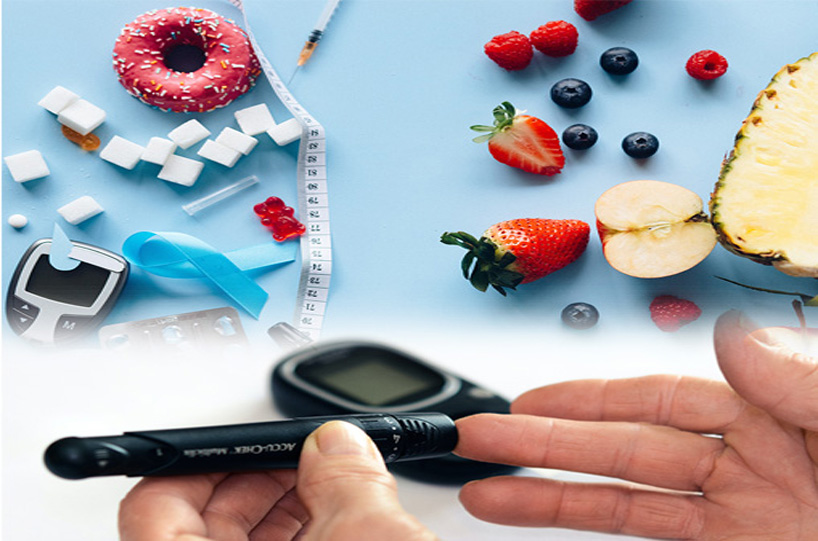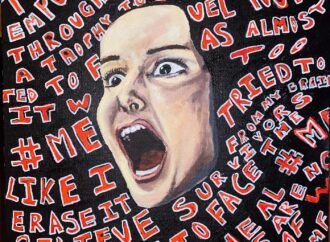Columnist Nozaina : Diabetes is a condition that affects people of all age groups. There are many types of diabetes, but one of the most common types of diabetes is Type 2 diabetes. A high blood sugar level is called diabetes. Approximately 537 million people worldwide have diabetes majority live in middle and low-income countries.

Columnist Nozaina :
Diabetes is a condition that affects people of all age groups. There are many types of diabetes, but one of the most common types of diabetes is Type 2 diabetes. A high blood sugar level is called diabetes. Approximately 537 million people worldwide have diabetes majority live in middle and low-income countries. According to the prediction, this number will increase by 643 million by 2030 and 783 million by 2045. Blood sugar level increase when the pancreas does not make enough insulin or the body is not appropriately responding to the insulin. Insulin is a hormone produced by the pancreas that controls the level of glucose in blood streams. Most types of diabetes are chronic. Diabetes is manageable with lifestyle changes and medication. Glucose comes from food rich in carbohydrates. Food travels down the esophagus to the stomach, where acid and enzymes break it into small pieces. Glucose is released during this process. Blood carries glucose toward all body cells. Cells use glucose for energy. Glucose needs insulin to enter the cell. When the pancreas is not making enough insulin or the body is not using it properly, glucose builds up in the bloodstream causing high blood sugar (Hyperglycemia). High blood sugar levels can cause health problems (nerve damage, heart disease, and eye problems).
The normal fasting blood sugar level is 99 mg/dl
100 to 125 mg/dl indicates prediabetes
126 mg/dl or higher indicates diabetes
After eating 170-200 mg/dl is considered normal
190-230 mg/dl indicates prediabetes
220-300 mg/dl indicates diabetes.
There are the following types of diabetes mellitus discussed below.
Prediabetes
A stage before type 2 diabetes, in which blood glucose levels are higher than normal, but not too much high to be formally diagnosed with type 2 diabetes.
Type 2 Diabetes
With this type, our body does not make enough insulin, or body cells do not respond to insulin. Type 2 diabetes mainly affects adults, but children also can have it.
Type 1 Diabetes
This type of diabetes is an autoimmune disease in which the immune system destroys the insulin-producing cells of the pancreas. Up to 10% of people who have diabetes have type 1 diabetes. It can develop at any age but is usually diagnosed in young adults and children.
Gestational Diabetes
Gestational diabetes is usually developing in some women during pregnancy. It usually goes after pregnancy. Women who have gestational diabetes are at greater risk of developing type 2 diabetes in later life.
Symptoms of Diabetes
Symptoms of diabetes include skin infection, blurred vision, unexplained weight loss, slow healing sores, and numbness in hands and feet. The main symptoms of diabetes are called the 3 Ps (Polydipsia, Polyuria, and Polyphagia) of diabetes.

Polydipsia
Polydipsia describes excessive and extreme thirst. It is related to those conditions that affect the renal system and may cause a person to urinate more frequently. Due to increased urination body feels that it needs to replace the liquid lost during urination. It’s a common symptom of diabetes. Diabetes increases the level of glucose in the blood. The body needs to balance these levels. The kidney produces more urine to excrete glucose quickly from the body, consequently restoring the level of glucose to normal.
Polyuria
Polyuria (urinating a lot) is a common symptom of diabetes. It is so common in diabetic people. When glucose level increase, glucose enters tubules within the kidneys. Urination increase when glucose enters tubules but is unable to reabsorb back into the bloodstream. Kidneys try to filter out the glucose, they also filter out more water from the other parts of the body. It leads to the overproduction of urine, which needs to be secreted from the body. Polydipsia and polyuria are both present at the same time.
Polyphagia
Polyphagia is a medical term used to define excessive hunger. There are many conditions in which increased appetite is expected, such as during hormonal conditions or after increased physical activity, but in these conditions, eating satisfies hunger, and the appetite level normalizes after food consumption. In the case of polyphagia, eating will not stop hunger. In diabetic patients, glucose does not easily enter the cell to be used as energy. The body continuously sends signals to the brain that it is hungry because it is not getting the energy from the food already taken.
Guidelines for Diabetic Patients
Physical activity and nutrition are essential parts of a healthy lifestyle for a diabetic patient. Being active and following a healthy meal plan help to keep blood glucose levels at a target range. Diabetic patients need to balance what they drink or eat with physical activity and medicine (if they are taking it) to manage blood glucose levels. What they eat, when they eat, and how much they eat all are important in keeping blood sugar levels in a normal range.
Initially, it’s challenging to become more physically active and make changes in what they eat. They can start with small changes and get the help of their family and friends.
Healthy eating and physical activity will help them to
Lose weight
Stay at a healthy weight
Have more energy and feel good
Delay or prevent the problems of diabetes
Keep blood pressure, cholesterol, and blood glucose level at the normal range
Choose a variety of healthy food from each food group
Dairy-low-fat or non-fat (milk, cheese, and yogurt)
Fruits include grapes, apples, bananas, berries, oranges, and melon
Non-starchy vegetables include tomatoes, greens, peppers, carrots, and broccoli
Starchy vegetables include green peas, potatoes, and corn
Proteins such as chicken, lean meat, eggs, fish, peanuts, nuts, dried beans, meat substitutes (tofu)
Grains: include half of your grain from whole grains (wheat, cornmeal, rice, oats, barley, and quinoa)
Physical activity reduces the risk of diabetes and may help to manage it
Regular exercise that includes strength and aerobic training helps to improve the blood sugar level and overall health in type 2 diabetic patients.
A fitness program may vary according to the current health status.
Walking, cycling, running, water aerobics, dancing, yoga, weight training, high-intensity interval training, Pilates, and tai chi help to manage diabetes.


























8 Comments
Albert Roun
April 25, 2023, 3:58 amPoor formatting. Simple English but low standard.
REPLYDr rimla
April 25, 2023, 9:34 pmHi there, I recently started reading your newspaper and I must say that I enjoy it. However, I couldn’t help but notice that there seems to be a lack of new research or information in this particular column.
REPLYGM DIN
April 26, 2023, 7:20 pmWell-done
REPLYZainab saleem
April 26, 2023, 7:37 pmVery supportive and authentic information. 👍
REPLYRamisha Javaid
April 26, 2023, 10:14 pmGood work 👏
REPLY